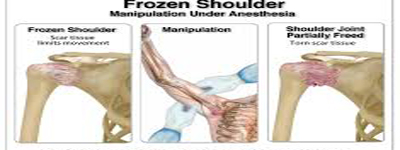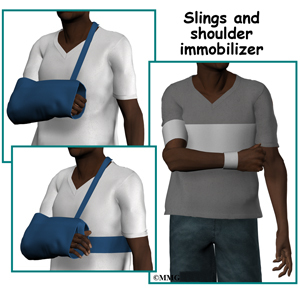
In most cases of dislocated shoulder, the upper part of your joint pops off from the shoulder socket and in turn the bone around it pops out. This is generally apparent because:
Your shoulder will become rounded instead of square. The skin on the inside of your elbow (your medial epicondyle) may bulge slightly when you lift your arm or move your arm outwards. The pain is sharp and constant, but you won't be able to lift your arm or move it.
There is a chance that dislocation will occur from the inside as well as the outside of your shoulder. The most common causes are muscle fatigue and lack of strength in the shoulder joint. If one muscle is weak or fatigued, it may cause the joint to fall out. You may have an overuse injury when you do pull-ups, sit-ups, or other strength exercises that strain your shoulders and arm muscles.
When you exercise with incorrect form, the result is more strain on your shoulder joint due to muscle imbalance. The shoulder can be strengthened by performing the correct muscle and joint exercises.
Another cause is if you have a herniated disc, the nerve to the upper arm is compressed, causing your shoulder to dislocate. If you have pinched nerves, it can also cause your shoulder to dislocate.
The cause of the shoulder dislocation is unknown, but there are several possible causes. The most common cause is muscle imbalance. Strengthening your shoulders will strengthen your stabilizing muscles and reduce the chance of a shoulder dislocation. Strengthening the stabilizing muscles includes: exercises to relieve shoulder pain, such as push-ups and shoulder circles, shoulder extensions and stretches, shoulder presses, overhead shrugging, and lowering the shoulders.
The third possible cause of dislocation is due to muscle weakness. Weakness in the rotator cuff or muscle groups in the shoulder, such as the biceps and triceps, can cause the shoulder to rotate outward. Weakness of the stabilizing muscles can cause the shoulder to twist inward. Rotator cuff weakness is common in people with chronic back pain, arthritis, osteoporosis, tendonitis, or spinal cord compression.
If you experience symptoms of dislocation, you should seek treatment immediately. These three causes can be eliminated by doing the right exercises, stretching exercises, and strengthening the stabilizing muscles.
Strengthening the muscles in the shoulder and arms will help strengthen the shoulder and arm bone. This reduces the likelihood of dislocation. Strengthening the arm bone increases its stability. When the bone is unstable, it can move, causing severe pain.

If the rotator cuff is weak, it can become inflamed. The result can be a dislocated shoulder.
Doing rotator cuff exercises to strengthen the muscles around the shoulder and arm, making them more stable. In addition, strengthening the muscle group reduces the chances of your shoulder falling out of alignment, and makes it less likely to dislocate.
The pain relief exercises are just some of the exercises you can do for your shoulder
For a complete pain relief exercise program, try the following: shoulder circles, shoulder push-ups, shoulder twists, and shoulder dips. If you don't like exercise, try to do these exercises at home by holding onto a chair or a table. To strengthen your shoulder muscles, try performing overhead squats or lunges.
To reduce the chances of pain or injury when doing pain relief exercises, remember to always start slowly. It is much better to do pain relieving exercises gradually, than to try to exercise too fast.
Once your pain is reduced, pain relief exercises can be started. If you've been doing pain relieving exercises for a while without success, ask your doctor about using prescription pain relievers. A physical therapist can also give you more advice about pain relief exercises.
Pain relieving exercises are not a cure for dislocated shoulders, but they can help relieve the pain. By strengthening and toning the shoulder, your shoulder will feel better.
By using pain relieving exercises to reduce the pain, you can return to normal activities. It is also important to remember to rest after performing pain relieving exercises to prevent further injury to the shoulder. If you want to avoid pain, make sure that you avoid activities that may aggravate the injury, such as: overhead squatting and jumping.
About the author